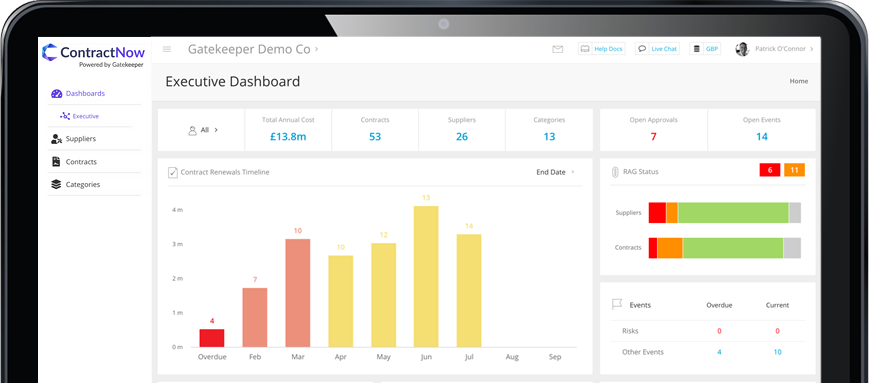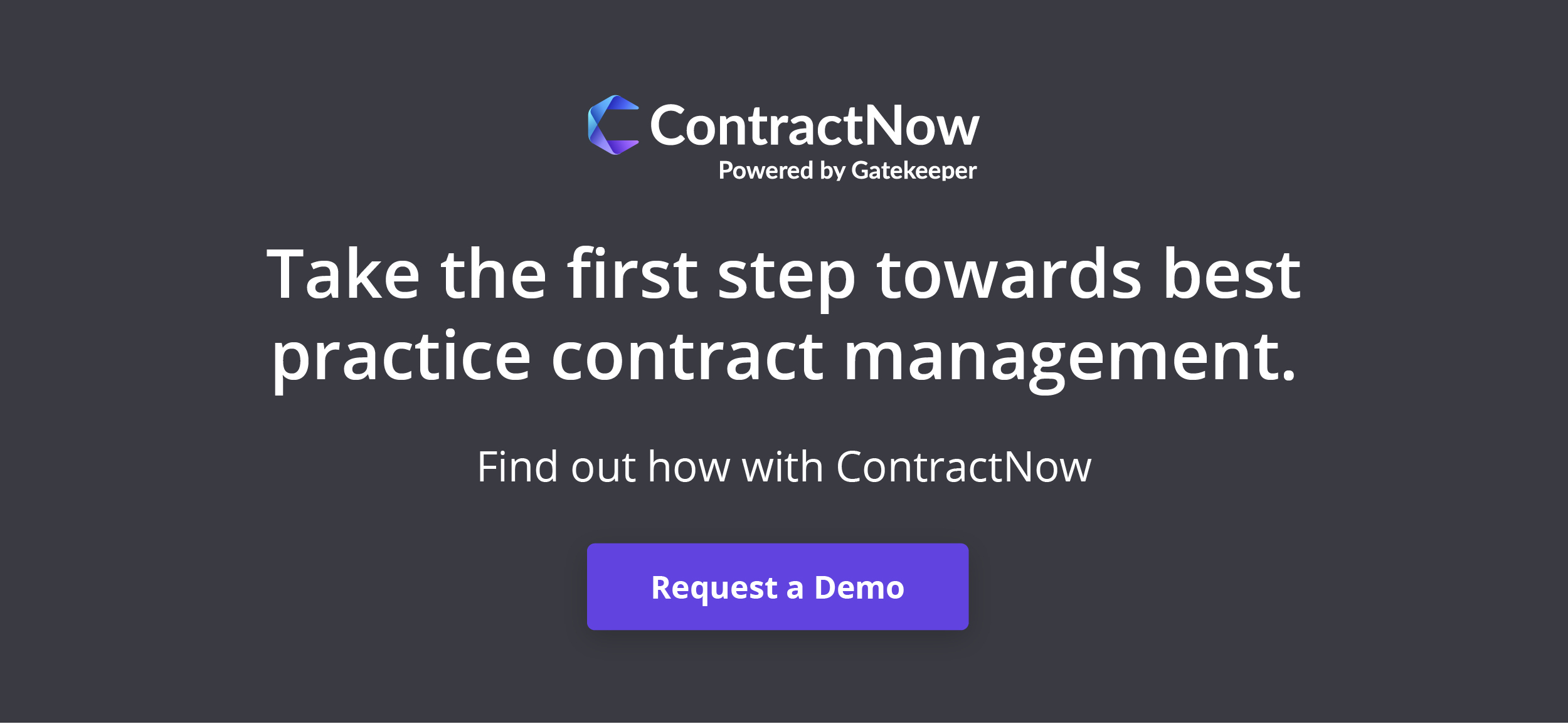Renewals are a critical stage in any contract’s lifecycle. They provide the key opportunity to objectively appraise the current contract relationship, measure its value and then either negotiate the best possible future terms or terminate an agreement that’s no longer required.
But what if your business has a poor renewal process?
Contract renewals can easily pass by unnoticed, potentially causing your business financial losses. You could be duplicating spend, spending money on suppliers that are too expensive or you could even lose a vital supplier if you don’t realise that the contract has expired. By having poor contract renewal management processes, your business becomes exposed to multiple vulnerabilities.
On top of these potential scenarios, there is one loss that is the most frustrating and potentially damaging. That’s the loss of a strong negotiating position.
If a contract auto-renews without your knowledge, the business won’t be able to negotiate better terms for the contract – whether that’s a new service or a cost-reduction on services currently being delivered.
How should you manage contract renewals?
Below, we take a look at three ways you can not only better manage your renewals but also get more value from them too. Let's dive into how to improve your contract renewal process.
1. Record all contract dates in a centralised system
Contracts have a number of key dates that should all be extracted and recorded into a centralised contract repository – preferably through a dedicated contract management solution.
Renewal dates are the designated date by which you need to decide whether to renew the period or close-out the contract, but they may not always be clearly visible within the contract. They should also not be confused with the ‘valid until’ date.
If the renewal date is not explicit, search for the notice period. Once you’ve found this, work backwards from the ‘valid until’ date and this will give you the renewal date that you need to store centrally.
By storing renewal dates centrally, awareness of them can be shared with all relevant stakeholders – reducing the chances of the date passing by unnoticed.
This centralised system could be as simple as an Excel spreadsheet, but should preferably be a cloud-based contract management solution.
 Use ContractNow's Repository to record dates
Use ContractNow's Repository to record dates
2. Review your contracts ahead of time
Your contract renewal process should never be based on a snap-decision. Finding out that a contract is about to renew and having to make a quick decision can have significant, and often negative, consequences for your business.
Every renewal decision should be made based on all the contract metadata you have available, along with the experiences of those who are directly and regularly involved with the suppliers. There are a number of things you should assess before moving forward, including:
- The ongoing and actual value of the contract
- Contract terms and what they mean for your renewals
- Whether or not there are cost-effective alternatives available
- Service levels, overall performance and any disputes (if applicable)
- Quality of relationships between your business and the third party
To complete accurate and contract reviews, you’re going to need time as you can’t possibly gather all this information in a working day. Therefore, the contract renewal isn’t the only date that you should be working towards. It’s important that you set aside a date to begin a contract review, giving yourself or your team enough time to assess all the key areas.
The time you give yourself to complete the review will depend on a number of factors including competing priorities, time of year, the industry you work in or even the value of the contracts.
You should also take into consideration the complexity of the contract, as this may require additional time too.
To review your contracts ahead of time, create a framework that includes:
- ‘Valid until’ date
- Renewal date
- Contract review date
But to get even more out of this timed framework, be sure to set relevant reminders for yourself ahead of each of these dates. After all, creating a framework is a waste of time unless you carry out the associated tasks.
Depending on the maturity of your business, the way you set these reminders may differ. If you’re working from Excel spreadsheets, then scheduling a calendar reminder may be the best way to prompt action. However, a contract management solution can make reminders even easier – eliminating the manual work required with Excel.
A dedicated solution does more than just record key dates. It triggers automated reminders for all relevant parties and can kickstart pre-designed contract review workflows, helping you to ensure that renewals aren’t accidentally missed or ignored.
3. Negotiate from the strongest possible position
Without completing step two, you won’t be able to truly understand the state of your contract, its value and how your supplier compares to others on the market. Without this information, you simply won’t be able to make an informed decision about whether to renew the contract in question or not.
If you decide to renew without completing a formal review process, you could end up paying an unnecessary expense. It also reduces your chance to negotiate for better terms, which is a real missed opportunity.
On the other hand, being fully informed about your contract and the current state of the market will give you the power to negotiate with a strategy in mind. You can request to update any of your terms, have meaningful discussions with your supplier and drive greater value from your contracts.
Or, by researching the market thoroughly, you may discover alternatives that offer better value, meaning you can move to terminate the existing agreement instead.
The amount of negotiating you do may largely depend on the contract’s value, complexity or even the relationship you have with the supplier. But negotiating from a strong position will always help you to stay one step ahead and get the most out of your agreements.
Conclusion
Whether the maturity of your current process means you’re using Excel sheets or a contract management solution, there are no excuses for putting your business at increased risk of unnecessary costs.
Record all key dates, make them visible to all relevant parties and ensure that you’re reviewing your contracts well before the renewal date comes to pass.
To make sure this is possible, your business needs to assign responsibilities for contracts and their renewals, thereby creating clear accountability across the organisation. Not only that, but it’s then vital to create a comprehensive handover any time there is a personnel change, so each contract still has a key contact in place.
Carrying out the three steps outlined in this article is about more than just eliminating risk from your business. It’s about giving your business the chance to increase the value from existing contracts – or even find a better alternative.
If you’re ready to invest in a solution that will help to improve your contract renewal process, request a demo of ContractNow.




